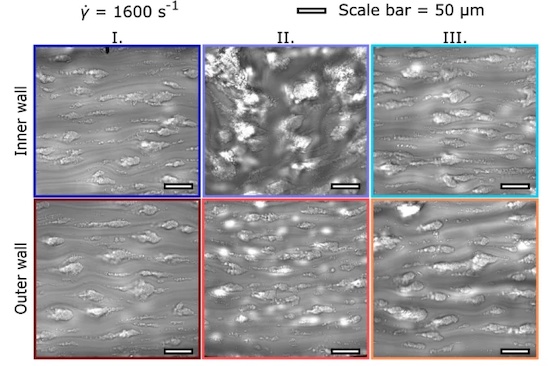Flow mechanics in thrombosis
Investigating the role of the mechanical environment

Mechanosensitive processes have a strong influence on the first stages of the thrombus formation. The adhesion of platelets, which occurs both in physiological hemostasis, as well as pathological thrombosis, is found to be highly shear dependent and sensitive to hydrodynamic alterations. The shift of initially even shear gradients, e.g. caused by a sudden reduction in vessel diameter (vasoconstriction), leads to the presence of so called elongational flows. These flow fields, defined by exerting tensile forces, are found to promote PLT adhesion under certain conditions, enabled by the mediation of prominent plasma molecule von Willebrand factor (vWF). Furthermore, PLT adhesion is known to depend on the presence of a CFL as well as the level of hematocrit.The effects of these essential blood flow parameters on PLT adhesion were investigated under static flow conditions, in straight geometries.
References
2023
- Initial platelet aggregation in the complex shear environment of a punctured vessel modelPhysics of Fluids, 2023
- Simulating Initial Steps of Platelet Aggregate Formation in a Cellular Blood Flow EnvironmentIn International Conference on Computational Science, 2023
2022
- Loss of \alpha4A-and \beta1-tubulins leads to severe platelet spherocytosis and strongly impairs hemostasis in miceBlood, The Journal of the American Society of Hematology, 2022
2021
- The effects of micro-vessel curvature induced elongational flows on platelet adhesionAnnals of Biomedical Engineering, 2021